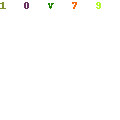Show
Combining the outcome out of all crosses we perceived a total of thirty two,511 CO events which were always generate high-resolution CO charts within the D. melanogaster (Figure step one). Considering the increased density regarding markers and also the small number out-of CO incidents for every single chromosome and you will genotyped fly, for each and every CO was backed by of a lot contiguous indicators from the either side and is our presumption that we features seen most of the COs. The total hereditary map length getting D. melanogaster obtained within our crosses is actually 287.step three cM, directly complimentary ancient strategies (282 cM ). A reduced-solution approximation with the shipments of CO rates (c) along chromosome possession predicated on all of our analysis (Profile S2) recovers an equivalent standard, large-size shipping as the early in the day maps based on noticeable indicators –, , –. Affirmed, c try sharply faster close telomeres and you may centromeres, and now we find no CO incidents on the quick 4th (dot) chromosome one to continues in order to meiotic segregation in place of chiasmata .
Price regarding crossing-over (c) considering research out-of all crosses and you can expressed from inside the centimorgans (cM) each megabase (Mb) per women meiosis (yellow range). c is shown collectively chromosomes to have 100-kb windows and you will a motion ranging from surrounding screen of fifty kb. Blue traces mean ninety% confidence interval for c at each windows.
Our detailed maps deepen the recent appreciation for intra-chromosomal variation in CO rates in Drosophila , , and outline this heterogeneity at a much finer scale across the whole genome. Heterogeneity in CO rates along each chromosome is significant at all physical scales analyzed, from 100 kb to 10 Mb, even after removing centromeric and telomeric regions with visibly reduced rates (P<0.0001 in all cases; see Materials and Methods). All chromosome arms (except the fourth chromosome) show 15-to-20-fold variation within regions traditionally labeled as regions of non-reduced recombination rates based on low-resolution maps. This heterogeneity in CO rates is highly punctuated, with intense short-distance variation and several adjacent 100-kb windows differing by 15-to-20-fold (eg., region 15.9-16.1 Mb in the X chromosome) thus defining hot- and coldspots for CO in D. melanogaster. Most coldspots are 100-kb regions embedded in larger regions with non-reduced recombination, but we also detect several larger regions that show consistently low CO rates (e.g., a region around position15.8 Mb along chromosome arm 2R) in addition to centromeric/telomeric sequences.
Intraspecific version inside the CO landscapes
The research off crosses from absolute D. melanogaster stresses greet me to create and you will contrast seven CO charts once managing having adaptation of circumstances that can transform CO cost within the Drosophila such as for instance ages, heat  , amount of matings or restaurants –. To improve mathematical energy we worried about variations certainly crosses at the the size off 250-kb with each other chromosomes. New seven CO charts tell you a premier amount of intra-certain adaptation, which have style of crosses having regions that have extremely large prices (>40-fold) relative to often surrounding regions or to other crosses (Profile 2). Sure-enough, crosses discussing you to definitely parental filters have more similar charts than crosses not sharing parental stresses but the total magnitude of one’s relationship ranging from this type of crosses, albeit significant, is quite quick (Spearman’s R = +0.451). This observance reinforces the concept of an extremely polygenic and you can polymorphic basis for CO shipment collectively chromosomes.
, amount of matings or restaurants –. To improve mathematical energy we worried about variations certainly crosses at the the size off 250-kb with each other chromosomes. New seven CO charts tell you a premier amount of intra-certain adaptation, which have style of crosses having regions that have extremely large prices (>40-fold) relative to often surrounding regions or to other crosses (Profile 2). Sure-enough, crosses discussing you to definitely parental filters have more similar charts than crosses not sharing parental stresses but the total magnitude of one’s relationship ranging from this type of crosses, albeit significant, is quite quick (Spearman’s R = +0.451). This observance reinforces the concept of an extremely polygenic and you can polymorphic basis for CO shipment collectively chromosomes.
To quantify variation in CO rates among the eight CO maps we estimated the variance to mean ratio (Index of Dispersion; RCO) and tested whether the different number of CO events at a given region can be explained by a Poisson process. Moreover, we focused on variation in the distribution of CO rates along chromosomes and therefore we took into account the number of total events for each chromosome (see Materials and Methods for details). Our study of RCO along chromosomes reveals many regions (107 or 22% of all non-overlapping 250-kb regions across the genome) with a variance among crosses larger than expected (overdispersion) and this pattern is observed in all chromosomes (Figure 3). The magnitude of this excess variance is highest for chromosome arm 2L while notably reduced for the chromosome arm 3L. Significant overdispersion of CO rates among crosses is also detected when we study larger genomic regions. At a physical scale of 1 Mb, more than half of the genomic regions exhibit excess variance, thus suggesting that regions with variable CO rates are frequent enough across the D. melanogaster genome to be playing a detectable role in a large fraction of these longer sequences.

Leave a Reply
Want to join the discussion?Feel free to contribute!